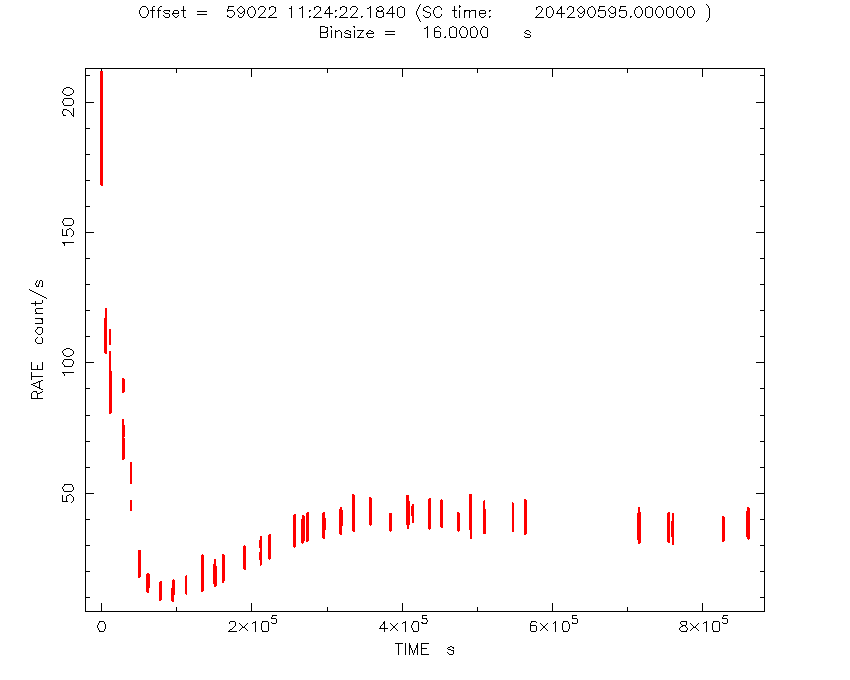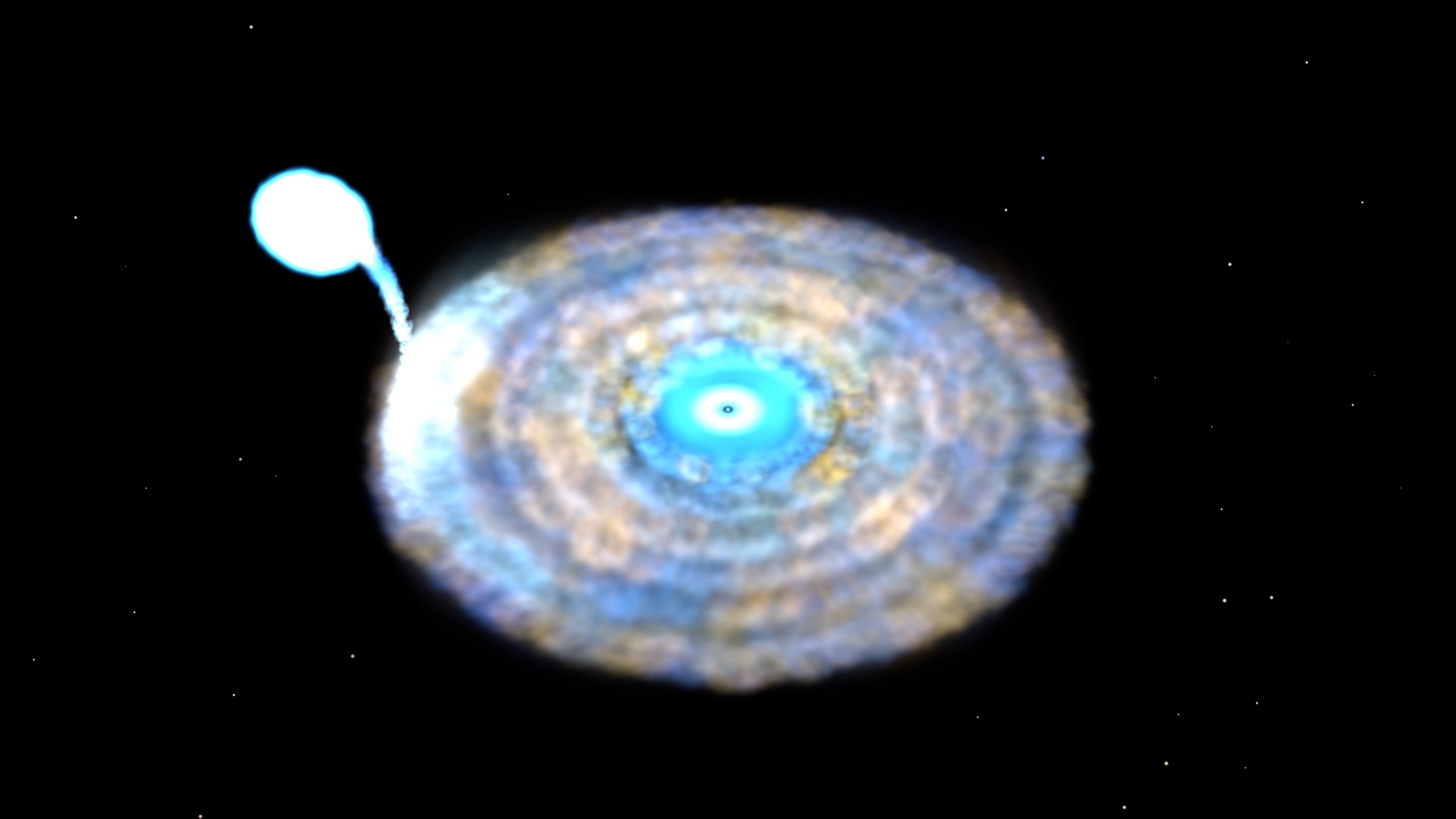NICER / ISS Science Nugget
for July 2, 2020
A long-duration X-ray burst from IGR J17062-6143
At 4:15 a.m. Eastern on June 22nd, 2020, the MAXI/GSC nova alert system was triggered by a bright X-ray burst from
the neutron-star system IGR J17062-6143. After receiving this information from the ISS MAXI team, NICER's
observing plan was updated and the payload slewed to this target, collecting our first view only 3 hours after the
MAXI trigger.
The NICER light curve (see figure 1) indicates that we caught the tail end of an approximately 5-hour-long
thermonuclear X-ray burst. Such long-duration X-ray bursts are rare events, and have been detected from this
source only twice before (in 2012 and 2015).
Due to the human intervention that is needed for NICER to follow up on MAXI triggers, the brightest phases of this
long-duration burst went unobserved. In the future, this reaction time may be reduced to minutes, as we work to
fully automate Target-of-Opportunity follow-up using a laptop onboard ISS.

Figure 1:
The number of X-rays per second detected by NICER as a function of time is shown for the recent MAXI triggered
observation of the neutron star system IGR J17062-6143. MAXI detected the source bursting about 3 hours earlier
with a flux much higher. NICER caught the tail of this burst and followed its evolution back to a quiescent
state.
Continuing observations of IGR J17062 over the following week have shown that the source brightness fell below its
historical level recorded by NICER for this neutron star. Over the course of several days, the flux then
gradually increased back to its historical level. While analysis of these data is still ongoing, a possible
explanation for this dip in flux may lie in the interaction between the X-ray burst and the neutron star accretion
environment (see figure 2). The massive thermonuclear burst likely blasted the accretion disk around the neutron
star with X-rays. This irradiation may have been strong enough to obliterate the inner regions of the disk, so
that the dip and subsequent recovery of the flux reflect the emptying and gradual re-filling of the accretion
disk.

Figure 2:
An artist impression of a neutron star system like IGR J17072-6143 that shows an accretion disc flowing matter
from a companion star into the neutron star. It is likely that the inner portion of this accretion disk was
obliterated by the massive burst which MAXI detected. Within a few days, the inner disc refilled with matter as
the source returned to its quiescent state.
<< Previous
Main Index
Next >>